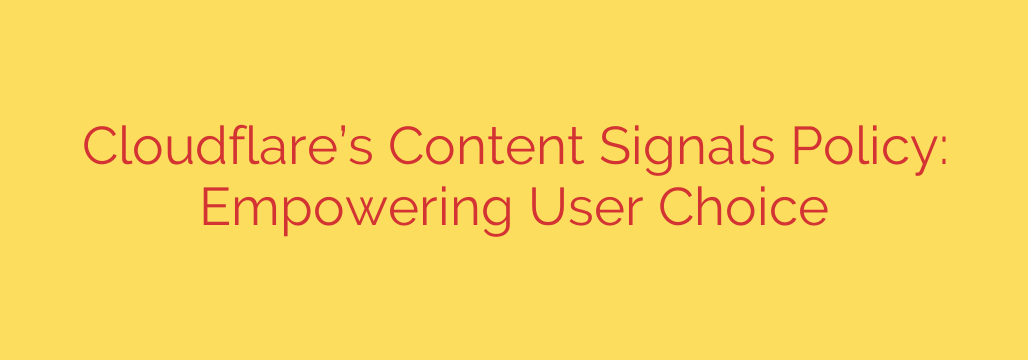
The Future of Online Content Moderation: Putting Control Back in Your Hands
The internet is built on layers of technology, from the websites you visit to the foundational infrastructure that delivers them. A critical and ongoing debate centers on who should be responsible for moderating harmful content online. When does a service that provides security and performance for a website cross the line into becoming a publisher, responsible for what that site contains?
A new, more nuanced approach is emerging that shifts the power of content moderation away from a few centralized infrastructure companies and places it closer to the end-user. This model prioritizes user choice and transparency over outright deplatforming, creating a more resilient and democratic internet.
The Challenge of Moderation at the Infrastructure Level
Internet infrastructure companies provide essential services like DDoS protection, caching, and domain name system (DNS) resolution. Their role is traditionally seen as content-neutral, similar to a utility company that provides electricity without judging how it’s used.
However, when a website hosts content that is abhorrent but not strictly illegal, these companies face immense pressure to act as judge and jury by terminating services. This creates a dangerous precedent. Deplatforming a site at the infrastructure level is the equivalent of an internet death penalty, effectively erasing it from the public web. This concentrates immense power in the hands of a few companies to decide what can and cannot exist online, often without due process or transparency.
A New Framework: From Gatekeeper to Signal Provider
Instead of making unilateral decisions, a more sophisticated solution involves using “content signals.” This framework relies on information from credible, independent sources to label potentially harmful content as it passes through the network.
Here’s how it works:
- Trusted Signals: The system leverages alerts from expert third-party organizations. For example, a signal for a phishing website might come from the Anti-Phishing Working Group (APWG), while alerts about malware distribution might come from trusted cybersecurity firms.
- Labeling, Not Blocking: Instead of blocking the content outright, the infrastructure provider attaches a metadata label or “signal” to it. This signal is invisible to the average user but can be read by other services down the line.
- Focus on Clear Dangers: This approach is most effective for unambiguous threats like phishing, malware, and the distribution of child sexual abuse material (CSAM), where there is broad consensus on the harm.
Empowering the Network Edge and User Choice
This is where the real innovation lies. The content, now labeled with a signal, continues on its path to the end-user. The decision to block it is then made by services closer to the individual, such as their Internet Service Provider (ISP), corporate network administrator, or even their chosen DNS resolver.
This model empowers every user to choose their own level of filtering. For instance:
- A family can choose to use a family-safe DNS service that automatically blocks websites flagged for adult content or malware.
- A corporation can configure its network security to block sites flagged for phishing to protect its employees.
- A journalist or researcher, however, can use an unfiltered connection to access the same content for their work.
This approach moves the decision-making process from a single, centralized point of failure to the diverse “edge” of the network. It allows for different policies to exist for different users, respecting individual choice and context.
Actionable Security Tips: How to Take Control of Your Internet Experience
This shift towards a signals-based system gives you more power than ever to curate a safer online environment for yourself, your family, or your organization. Here’s what you can do today:
- Use a Secure DNS Resolver: Your device uses a DNS resolver to translate domain names (like
example.com) into IP addresses. Many free services offer built-in protection. Consider switching to a DNS provider that automatically filters for malware, phishing, and adult content based on your preferences. - Check Your ISP’s Security Settings: Many major Internet Service Providers offer parental controls and security suites. Log in to your account portal to see what filtering options are available and enable them for your home network.
- Deploy Endpoint Security: For the highest level of protection, ensure all your devices are running reputable antivirus and anti-malware software. These tools provide a critical last line of defense against threats that might slip through network-level filters.
- Educate and Be Aware: Understand the tactics behind phishing and social engineering. No filter is a substitute for a vigilant user. Be cautious about suspicious links and unsolicited requests for personal information.
By embracing a model of labeling and user choice, the internet can become a safer place without resorting to centralized censorship. This new paradigm fosters a more transparent and resilient ecosystem where control is rightfully placed in the hands of the end-user.
Source: https://blog.cloudflare.com/content-signals-policy/








